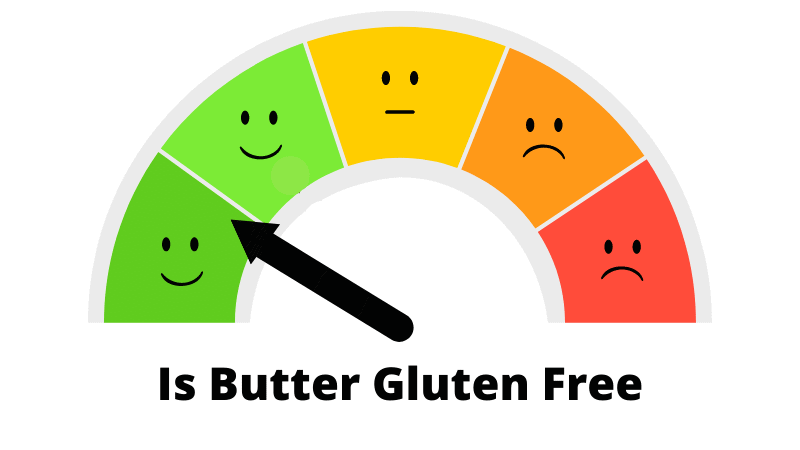Is there gluten in butter? Natural butter is gluten free, in fact most butter brands will be gluten free unless you get a butter that adds flavors and spices.
Butter is made from milk, and because of this purely animal-based source, it is entirely free from gluten content.
What to look out for: Cross contamination is common with foods like butter. Think about shared knives or crumbs of bread falling into the butter plate.
PRO TIP: If you have Celiac or avoid gluten and want to eat butter on a shared table, make sure you are the first one to grab a scoop and put it on your own plate, this way you won’t have to share the plate with others who may eat regular bread and cross contaminate the butter.
Gluten free confidence score for butter

What is butter
Butter is a common ingredient in both sweet and savory foods and snacks, as well as a condiment, flavoring agent, spread, and fat base for cooking.
It has a distinct flavor. Butter is made of fat and protein in animal milk. Usually, butter comes from cow’s milk.
But you can also find butter made from the milk of other mammals like sheep, goats, yaks, and more.
Since it is made from an animal source, plain butter, both salted and unsalted, is obviously and inherently gluten free.
Ways to Avoid Cross-Contamination of Butter
Cross-contamination is easily possible at home. So, take the followings steps to avoid it –
- Use separate butter sticks, knives, and dishes for gluten eaters and non-gluten eaters.
- Label the butter knives and containers to be dedicatedly used for gluten free butter.
- Ensure that the gluten eaters in the house are not using their knives in the butter you eat.
- Do not just wipe off a knife used in gluten products to cut the butter you consume.
- Store butter in a covered butter dish so that it doesn’t accidentally get contaminated.
- Assign a new butter dish or one that’s thoroughly cleaned and sanitized.
Needless to say, you must avoid gluten-bearing foods, like bread or pancakes made of wheat flour, on which we use butter most often.
Are All Butter Brands Gluten Free?
Since butter brands don’t usually contain a gluten free label, is it right to assume that all butter brands are free from gluten? Some of the most popular brands that produce plain butter bring gluten free butter to the shelves.
Consider brands like:
| President | Smart Balance |
| Earth Balance | Organic Valley |
| Land of Lakes |
*But make sure to read the ingredients list and test these in small amounts.
Conclusion
Most butter brands are in fact GF, but you need to read the labels to make sure, and try to avoid brands that add flavors or spices.